Related Research Articles
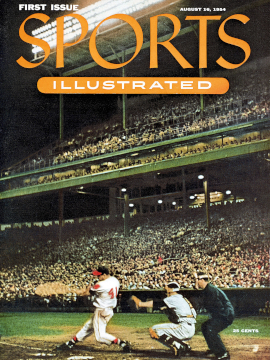
Sports Illustrated (SI) is an American sports magazine first published in August 1954. Founded by Stuart Scheftel, it was the first magazine with circulation over one million to win the National Magazine Award for General Excellence twice. It is also known for its annual swimsuit issue, which has been published since 1964, and has spawned other complementary media works and products.

Amazing Heroes was a magazine about the comic book medium published by American company Fantagraphics Books from 1981 to 1992. Unlike its companion title, The Comics Journal, Amazing Heroes was a hobbyist magazine rather than an analytical journal.

The Sports Illustrated Swimsuit Issue is published annually by American magazine Sports Illustrated and features female fashion models, celebrities and athletes wearing swimwear in various locales around the world. The highly coveted cover photograph has been considered as the arbiter of supermodel succession. The issue carries advertising that, in 2005, amounted to US$35 million in value. First published in 1964, it is credited with making the bikini, invented in 1946, a legitimate piece of apparel.

Stephanie Michelle Seymour is an American model and actress. During the 1980s and 1990s, she was one of the most popular supermodels, being featured in the Sports Illustrated Swimsuit Issue and the cover of Vogue, as well as being a former Victoria's Secret Angel. She had a book published about beauty tips and has participated in advertising campaigns for clothing and cosmetic products. In 2017, Seymour launched her own line of lingerie. She has ventured into acting with one appearance in each medium of film, television, and video games.

Yamila Díaz-Rahi, also Yamila Diaz, is an Argentine model. She has appeared in the Sports Illustrated Swimsuit Issue a total of 11 times, and made the cover of the magazine first in 2002 and again in 2006. She also featured in the 50th anniversary SI edition in 2014 titled "The Legends".

ESPN The Magazine was an American monthly sports magazine published by the ESPN sports network in Bristol, Connecticut. The first issue was published on March 11, 1998. Initially published every other week, it scaled back to 24 issues a year in early 2016, then became a monthly in its later days.

Inside Sport is an Australian sport magazine published by nextmedia. It began publication in 1991. Inside Sport largely comprises articles by freelance journalists, covering a wide array of sports. It focuses on sporting content, sports photography, and the attention given to models and their photo shoots.
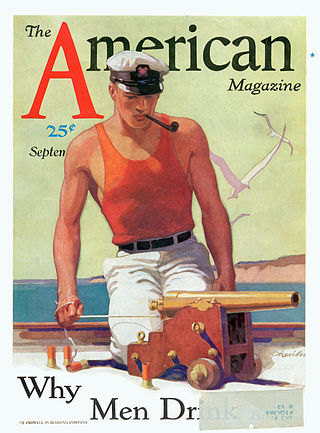
The American Magazine was a periodical publication founded in June 1906, a continuation of failed publications purchased a few years earlier from publishing mogul Miriam Leslie. It succeeded Frank Leslie's Popular Monthly (1876–1904), Leslie's Monthly Magazine (1904–1905), Leslie's Magazine (1905) and the American Illustrated Magazine (1905–1906). The magazine was published through August 1956.
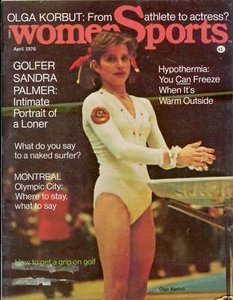
womenSports magazine was the first magazine dedicated to women in sports. It was launched in close conjunction with Billie Jean King's Women's Sports Foundation and each issue of the magazine contained a two-page article written by the executive director of the Foundation. It was started soon after Billie Jean's win at the Battle of the Sexes.

Thirteen Minutes Magazine is a magazine published by in the United States which covers high fashion, Asian women's beauty, movies/TV, food, and popular culture. The magazine was started in 2005. It is a magazine about bicultural Asians and those interested in Asian culture. Its headquarters is in Orange County, California.
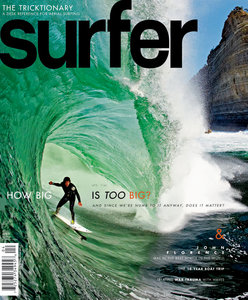
Surfer was an American monthly periodical focused on surfing and surf culture, founded in 1962 by noted surfer, writer, photographer, artist and humorist John Severson (1933–2017). The magazine folded in 2020.
Sport was an American sports magazine. Launched in September 1946 by New York-based publisher Macfadden Publications, Sport pioneered the generous use of color photography – it carried eight full-color plates in its first edition.
Joanne Gair, nicknamed Kiwi Jo, is a New Zealand-born and -raised make-up artist and body painter whose body paintings have been featured in the Sports Illustrated Swimsuit Issue from 1999 to 2017. She is considered the world's leading trompe-l'œil body painter and make-up artist, and she became famous with a Vanity FairDemi's Birthday Suit cover of Demi Moore in a body painting in 1992. Her Disappearing Model was featured on the highest-rated episode of Ripley's Believe It or Not. She is the daughter of George Gair.

The modern bikini first appeared in 1946, and since then it has become a part of popular culture. It is one of the most widely worn women's swimsuits, used for swimming and in a variety of other contexts. Today, bikinis appear in competitions, films, magazines, music, literature, and video games. Despite the availability of more revealing glamour wear, bikini modeling remains popular and can still create controversy. Portrayals of the bikini in popular culture led, to a large extent, to its acceptance by Western society at large. In 1960, Brian Hyland's pop song "Itsy Bitsy Teenie Weenie Yellow Polkadot Bikini" inspired a bikini-buying spree. The white bikini worn by Ursula Andress as Honey Ryder in the 1962 James Bond film Dr. No has been cited as one of the most famous bikinis of all time. By 1963, the movie Beach Party, starring Annette Funicello and Frankie Avalon, led a wave of films that made the bikini a pop-culture symbol. Playboy first featured a bikini on its cover in 1962. The Sports Illustrated Swimsuit Issue debuted two years later. This increasing popularity was reinforced by its appearance in such contemporary films as How to Stuff a Wild Bikini featuring Annette Funicello and One Million Years B.C. (1966) featuring Raquel Welch. Raquel Welch's fur bikini in One Million Years B.C. became a famous moment in cinema history. Hollywood stars such as Marilyn Monroe, Jayne Mansfield, Gina Lollobrigida and Jane Russell further helped the growing popularity of bikinis. Pin up posters of Monroe and Mansfield, as well as Hayworth, Bardot and Raquel Welch distributed around the world contributed significantly to the popularity of the bikini.
Marc André Laguerre was a journalist and magazine editor, best known as the managing editor of Sports Illustrated from 1960 to 1974, during which time he oversaw the growth in the magazine from a niche publication to become the industry leader in weekly sports magazines. It was under his leadership that the annual Sports Illustrated Swimsuit Issue was first published. When he retired in 1974, he had been managing editor of the magazine for 704 issues, then a record among magazines published by Time, Inc., SI's parent company.
Railways Illustrated is a British monthly railway magazine. Inside there is detail of news, stock changes, tours, and more. It is aimed at railway enthusiasts.
Belgravia was a monthly London illustrated literary magazine of the late 19th century that was founded by Mary Elizabeth Braddon.

Kate Lynne Bock is a Canadian model known for her appearances in the Sports Illustrated Swimsuit Issue since 2013. In 2020, she appeared on the cover, alongside Olivia Culpo and Jasmine Sanders.
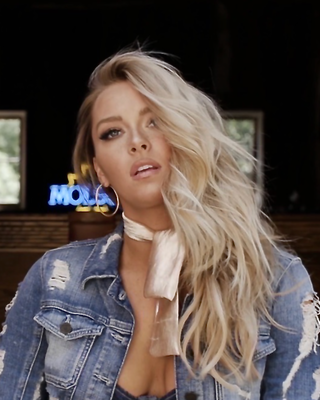
Camille Veronica Kostek is an American model, television presenter, and actress. She appeared in the Sports Illustrated Swimsuit Issue, and was featured on the cover of the magazine's 2019 edition.